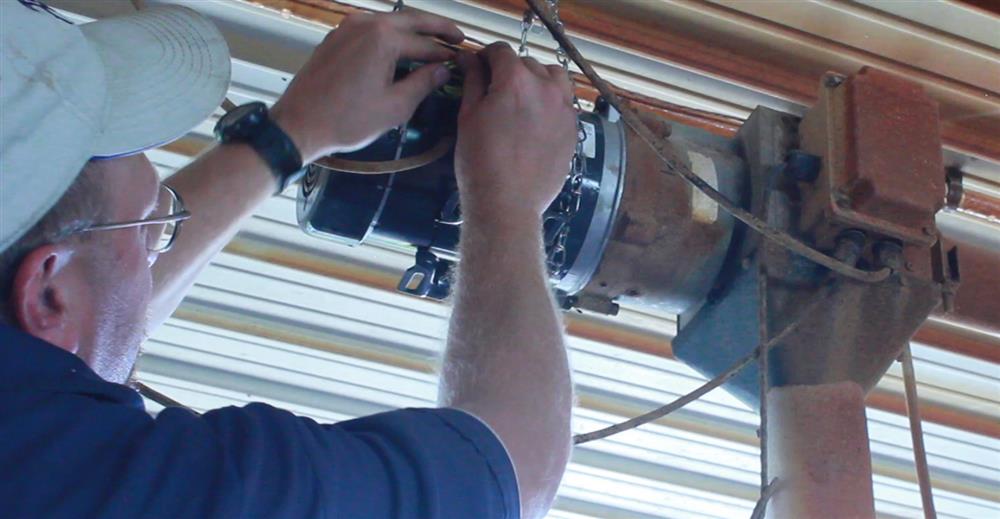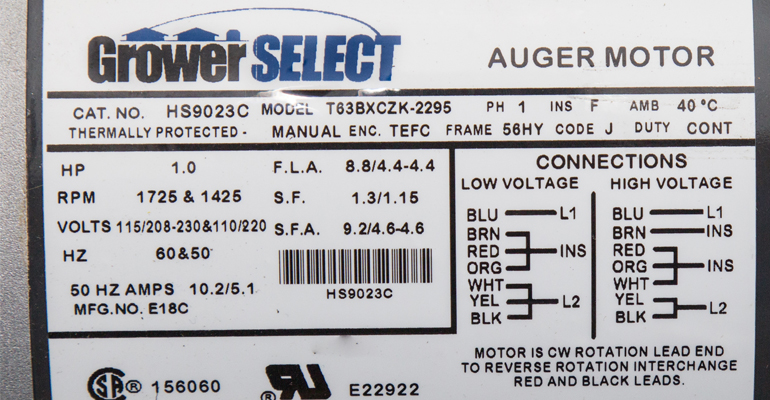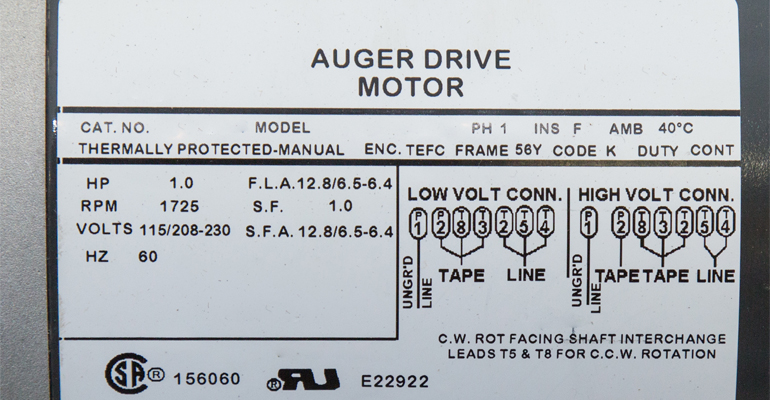
Replacing motors on feed systems and ventilation fans is maintenance cost familiar to all hog and poultry growers. Many equipment retailers offer generic units as an option to more expensive Original Equipment Manufacturer (OEM) motors. At first glance, these motors may look comparable in horsepower, frame type, and mounting.
Fan and feeding equipment manufacturers work with motor companies to source motors designed to match up with specific equipment. Generic motors, on the other hand, are stock items that motor manufacturers keep on the shelf to fit a wide variety of applications. Although the quality of these stock motors can be good, they are not explicitly made for a single purpose. While they will undoubtedly operate a feed system or ventilation fan, generic motors will typically not last as long or run as efficiently. A closer look at the motor plate will give the information needed to make an informed choice.
Here are two motor plates for two one horsepower direct drive auger motors to illustrate the difference.


Service Factor
S.F. or Service Factor is defined as a motor's ability to operate under an increased short-term load. The higher a motor’s rating, the more durable the motor. In this example, the motor with 1.3 S.F. will provide additional horsepower when the motor is overloaded. Fluctuating voltage, common with rural power grids, can cause motor overloading even under normal system loads.
Amp draw
F.L.A. or Full Load Amps represents the amount of current the motor is designed to draw at the rated horsepower. In this case, the generic motor draws 6.4 amps while the GrowerSELECT motor is rated at 4.4 amps. We can estimate the annual electric usage by using the national average of 10¢ per kilowatt and the average run time of two hours per day.
(6.4 - 4.4) amps x 230 volts = 460 watts
460 watts x 2 hours/day x 365 days = 335,800 watts/year
335,800 watts / 1000 watts = 335.8 kilowatts/year
335 Kw x .10/ Kw = $33.58 difference in annual operating costs
Please note that this example is a comparison of nameplate ratings only. Actual application results will vary slightly depending on the specific application loading.
Weight
A straightforward item to check is the total weight of the motor. Although not listed on the motor plate, the generic motor weighted 33 pounds while the GrowerSELECT weighted over 35 pounds. A heavier motor tends to indicate more copper and steel are used in the windings. Heavier windings minimize heat buildup and dissipate the heat quicker. Excessive heat is one of the primary causes of electric motor failure. In fact, for every 18 to 20 degrees increase in temperature, the expected motor life is cut in half. Other contributing factors to shortened motor life are related to component durability; such as aluminum wire usage, nondurable centrifugal switches along with less expensive start and run capacitors.












 Україна
Україна Méjico
Méjico


